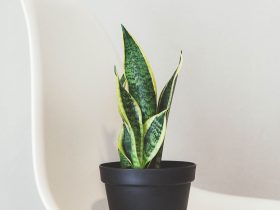
How to Get Gel Polish Off at Home
What You Need to Know About Gel Polish Removal
Removing gel polish from your nails can be a daunting task, but with the right techniques and products, it can be done safely and effectively at home. In this comprehensive guide, we’ll take you through the steps of how to get gel polish off at home, dispelling common myths and sharing expert tips to ensure a smooth and stress-free removal process.
The Benefits of Removing Gel Polish at Home
Removing gel polish at home has several benefits, including:
| Benefits | Description |
|---|---|
| Time-saving | No need to visit a salon or schedule an appointment |
| Cost-effective | Save money on salon prices |
| Flexibility | Remove gel polish at your own pace |
| Customization | Control the removal process to suit your nail type and condition |
| Convenience | Remove gel polish in the comfort of your own home |
Before we dive into the steps of removal, it’s essential to understand the types of gel polish and the factors that affect the removal process.
Type of Gel Polish and Its Impact on Removal
There are different types of gel polish available in the market, and each has its unique properties that affect the removal process. The most common types of gel polish are:
- Traditional gel polish
- Gel polish with nail glue
- Gel polish with built-in primer
Traditional gel polish is the most common type and requires a separate primer and cleanser for removal. Gel polish with nail glue requires a specialized glue remover, while gel polish with built-in primer can be removed using a combination of solvent and cleanser.
Factors that affect the removal process include:
- Nail condition: Nails with ridges, curves, or damage can make removal more challenging.
- Gel polish thickness: Thicker coats of gel polish require more time and effort to remove.
- Gel polish quality: Low-quality gel polish can be more difficult to remove due to its brittleness and tendency to lift off the nail plate.
Materials Needed for Removal
To remove gel polish at home, you’ll need the following materials:
- Gel polish remover (acrylic or organic)
- Cuticle oil or moisturizer
- Cotton pads or swabs
- Orange stick or cuticle pusher
- Nail file or emery board
- Soft cloth or cotton ball
Step-by-Step Guide to Removing Gel Polish at Home
Step 1: Prepare Your Nails
Before you start removing the gel polish, it’s essential to prepare your nails. Remove any oils or lotions from your nails and surrounding skin, as these can interfere with the removal process. Gently push back your cuticles using an orange stick or cuticle pusher.
Step 2: Apply the Remover
Apply a thin layer of gel polish remover to a cotton pad or swab. Gently place the cotton pad or swab on top of the gel polish, starting at the center of the nail and working your way outwards. Use a gentle, sweeping motion to remove the gel polish. Be careful not to apply too much pressure, as this can cause lifting or damage to the nail plate.
Step 3: Repeat the Process
Continue applying the remover and gently removing the gel polish in a circular motion. Repeat this process several times, allowing the remover to sit on the nail for about 10-15 seconds before wiping it off with a soft cloth or cotton ball.
Step 4: Use a Buffer or File
Once most of the gel polish has been removed, use a buffer or file to gently buff away any remaining residue. Start with a coarse buffer and gradually move to a finer one to avoid damaging the nail.
Step 5: Finish with a Cuticle Oil or Moisturizer
Apply a cuticle oil or moisturizer to the nail and surrounding skin to hydrate and nourish the area. Massage the oil into the cuticles and gently push them back using an orange stick or cuticle pusher.
Tips and Tricks for a Successful Removal
- Use a good quality remover that is specifically designed for gel polish removal.
- Apply gentle pressure and avoid using force, which can cause damage to the nail plate.
- Work in small sections to avoid overlapping and ensure a smooth removal process.
- Use a cotton swab or pad to gently wipe away the remover, rather than using your bare fingers.
- Avoid using harsh chemicals or abrasive materials, which can damage the nail or surrounding skin.
- Take your time and be patient, as the removal process can take some time.
Frequently Asked Questions
- Q: Can I use acetone to remove gel polish?
A: While acetone can be effective, it can also dry out the nails and surrounding skin. Instead, use a gel polish remover specifically designed for at-home removal. - Q: How do I remove gel polish from my nails if I’ve had a gel polish over gel polish application?
A: This can be a bit more challenging, but it’s still possible. Use a combination of removers and follow the same steps as above. If the gel polish is stubborn, you may need to use a combination of a solvent and a cleanser. - Q: How do I prevent gel polish from lifting off my nail plate during removal?
A: Apply a thin layer of remover and gently remove the gel polish in a circular motion. Avoid applying too much pressure, and use a cotton swab or pad to wipe away the remover. - Q: Can I use nail glue to reattach gel polish that has lifted or fallen off?
A: No, it’s best to avoid using nail glue to reattach gel polish. Instead, use a combination of a solvent and a cleanser to gently remove the gel polish, and then reapply a new coat.
Conclusion
Removing gel polish at home can be a simple and effective process, provided you follow the right techniques and use the right materials. By understanding the different types of gel polish and the factors that affect the removal process, you’ll be better equipped to handle any challenges that may arise. Remember to take your time, be patient, and use gentle pressure to avoid damaging your nails or surrounding skin. With these tips and tricks, you’ll be able to say goodbye to gel polish woes and hello to healthy, beautiful nails.













Leave a Reply